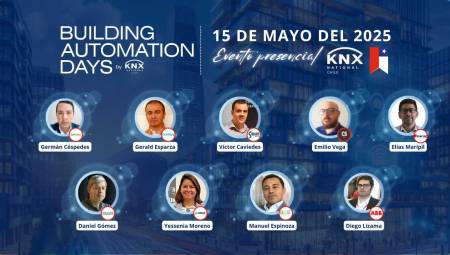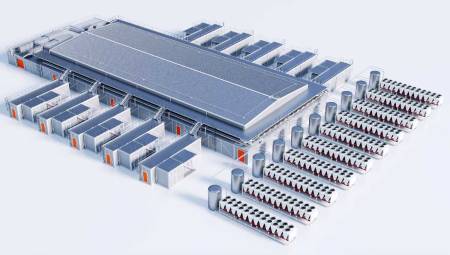 While public cloud offerings sometimes provide customers with separate clouds for compute and storage, and even different clouds for different types of storage, this approach does not equate to a truly comprehensive workflow.
While public cloud offerings sometimes provide customers with separate clouds for compute and storage, and even different clouds for different types of storage, this approach does not equate to a truly comprehensive workflow.
By Alex Grossman*
Because programmers and producers of post-production content incorporate into their work higher resolutions (such as 4K); Managing an increasingly distributed type of collaborative production, and streaming content to an ever-widening range of media, their workflows have become more complex than ever. Even though the content creation process requires an increasing number of steps, the deadlines remain the same, and have even become tighter. To meet those deadlines and remain competitive, companies must improve their efficiency and lower costs. And this process starts by ensuring that content is always ready and available for production.
With so many new possibilities for monetization and reuse, today's workflows have become a two-way process – as opposed to a linear workflow – a circular flow that has at its center the dissemination of content. Companies must find a way to cope with this new reality.
To make the process even more complex, many companies now have several independent production centers — because they have grown or new acquisitions — that are not easy to connect. In the absence of an easy way to share content, they send it from one place to another and have different copies, thus sacrificing control over versions, as well as the efficiency of the process. The alternative is to reduce your team and include local talent that can interact with shared storage, and this is not an ideal method in a competitive market.
The cloud offers a much better solution. Cloud solutions allow distributed equipment and facilities easy and secure remote access to content and other digital assets. Thanks to the cloud, content producers and owners can keep assets in a common repository to help workgroups work collaboratively, and disseminate content to multiple channels. When implemented correctly, the cloud can provide programmers and post-production companies with more agile and streamlined workflows that can reduce the time, resources, and efforts required to meet their deadlines.
Contemplate cloud for media flows
The cloud was not designed to support media workflows. Although several vendors have designed cloud workflow solutions, most of them deal only with the two fundamental components of the cloud: storage and computing power.
When most people think of the cloud, they're thinking of storage: Google Drive, iCloud, or cloud backup, and shared storage for personal use. Backing up fixed data and sharing photos are ideal uses of the "public cloud," which offers convenient and cheap storage, but lacks the service level agreements (SLAs) and access assurance that media workflow applications require. The computational component is usually associated with software as a service (SaaS), but this category also includes additional processes more focused on media such as transcoding.
Although public cloud offerings sometimes provide customers with separate clouds for compute and storage, and even different clouds for different types of storage, such as intermediate and long-term storage, this approach does not equate to a truly comprehensive workflow.
More often than desired, companies that want to benefit from the cloud are forced to disrupt their current workflows. They end up allocating valuable resources to chain storage and compute resources, coordinate the movement of content from cloud to cloud, and establish the necessary controls for quality assurance throughout these transfers. And then, there are the sensitive security issues that need to be taken into account.
Control over security usually ends once content has been moved to a cloud infrastructure managed by an independent third party. Most public clouds store data from multiple companies on the same hardware systems, and even on the same disks, raising concerns about who may have access to the content. Additionally, the reliability and consistency of access to content depends on how good the management that third parties make of the cloud.
Private cloud solutions can provide security and reliable access. However, most of these types of offerings are currently designed to provide global access to media in simple storage repositories. Whether they're located locally or in remote data centers, they don't provide integration with the full range of applications that make up most media workflows. Fortunately, a new way of designing cloud workflows offers programmers and post-production companies a more viable solution: they offer the best of the cloud, along with the benefits of trusted and recognized media applications and workflows.
Adapt private cloud to media
Rather than simply moving storage and computing resources to the cloud, media-oriented cloud solutions are taking entire existing workflows, including your applications, and moving them to the cloud. Cloud solutions that are built with a rich integrated ecosystem of technology partners ensure that if media workflows are effective on an on-premises level, they are also effective in the cloud.
This cloud model not only allows companies to maintain the way they work and the applications they use, but it also works regardless of location, without the need for external gateways, translations, or other quality control procedures. In short, assets and content remain native, and employees are familiar with the processes of shared workflows, and have at their fingertips the best tools and applications that are currently used, as well as the tools and applications that are contemplated towards the future.
Installation example
A typical model of a media workflow in a private cloud is a primary production facility and one or more secondary production facilities, all with workflow storage collaboration. All these facilities are connected to each other via the Internet (via accelerated WAN transfer or a similar mechanism), and equally to a data stream hosted in a data center, which provides much more than just storage or computational resources.
Through this model, users can collect content locally at any facility and send that content to the cloud data center, where it is available to all other facilities. Once the content is in the clouds, it won't have to be moved again. The data center supports production automation in the cloud, allowing remote users the ability to transcode, edit, and broadcast content. All the features the product requires are located there, in the cloud, and the data center offers access to greater connectivity at a much more affordable cost than would be achieved with a separate installation.
Because this cloud is private, each company can have control over access to content, and at the same time contracts with a third party for hosting and maintenance. In addition, companies can pay to avoid the expense of deploying a large primary storage, secondary buffer, and file storage system in all locations. If they opt for a solution that is integrated with leading production technologies and applications, their users can continue to work with the tools they know and in the way that is most convenient for them.
Designing a cloud-based workflow
A cloud solution that is integrated with prominent production applications makes it possible for companies to seamlessly migrate their existing workflows to the cloud. Popular software packages allow users of different facilities to view, edit and put the finishing touches on content over the Internet and do so without making proxy copies. For example, a rendering engine can send content as it is acquired, allowing for a smooth user experience, and transcoding and transfer engines can ensure that content is transferred at the speed needed for real-time production workflows.
At the base of this complete production automation system is an engine that manages the complete inventory of goods and contents. A true workflow automation system goes far beyond the functions of a media asset management (MAM) system, automating the end-to-end workflow, allowing you to keep content and assets in sync, no matter where they are stored. Therefore, as soon as content is processed in the cloud, it becomes visible and available to users across all connected facilities, which become a single collaborative production environment.
Summary
The creation and dissemination of content has evolved into a complex process due to numerous reasons, ranging from technical advances to new trends in media consumption. What hasn't changed is the need to deliver high-quality content on agreed deadlines while keeping costs as low as possible. Cloud-based media workflows offer programmers and post-production companies a way to achieve all of these goals. Thanks to advanced solutions that enable truly comprehensive media workflows, companies can leverage the best tools and professionals to meet their clients' needs in terms of content creation and dissemination, as well as their own operational and financial needs.
*Alex Grossman, Vice President of Media and Entertainment, Quantum















